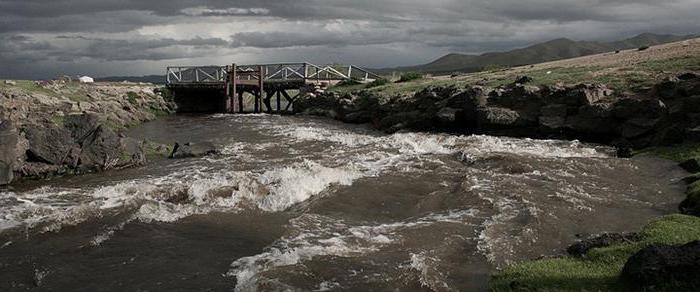From 05.07.2009, the procedure is in force in accordance with which the calculation of damage to water bodies is carried out. The order of the Ministry of Natural Resources of March 30, 2007 was canceled. Instead, another normative act was approved. He introduced a new method. How to calculate damage to water bodies? Learn about this from the article.
Calculation of damage to water bodies: Order of the Ministry of Natural Resources of Russia of 2007
The previous order was repeatedly criticized. The reasons for this were numerous inconsistencies with legislation, ambiguities, contradictions. The experts considered the weakest points to be the insufficient legal validity of the application. In addition, the calculation of damage to the water body itself was not transparent enough. As can be seen from the analysis of judicial practice, there have often been situations when the amount claimed in claims for compensation for damage was overestimated due to incorrect application of the coefficients and arithmetic errors. Of course, it is assumed that the flaws are unintentional. However, in a detailed study of the claims, it was possible to reduce the amount by several times.
Features of circumstances
According to the previous procedure, the calculation of damage to a water body was carried out when identifying facts of non-compliance with the requirements of the law. In particular, it was about violations that led to or leading to its depletion or clogging. From this we can conclude that the previous methodology for calculating damage to water bodies was applied not only in the presence of real harm, but also in the case of potentially probable. This fact, meanwhile, contradicts the Civil Code. In accordance with its provisions, to determine the amount of compensation, it is necessary not only to establish a violation of the law. A prerequisite is the determination of the fact of harm, that is, the immediate consequences. In addition, the guilt of a particular subject, the causal relationship of his actions and the result, is essential. Defendants need to take into account that in practice, often not only the fact of proof of the consequences, but also their guilt is missing.

The specifics of using the coefficients
According to many experts, the use of indicators N and K. in the formulas that previously used to calculate damage to water bodies is very doubtful. They were determined in accordance with the MPC for agricultural production. These indicators reflected water quality standards for fishery facilities. When studying claims for damages to the court, it is necessary to pay attention to the fact that from 01.01.2007 to 16.03.2010 the list of standards, which was approved by the order of the State Committee for Fisheries No. 96, was invalid. This list served as an annex to the Rules for the Protection of Surface Waters. They, in turn, have lost force since 01.01.2007. Today, an act is approved by the decree of the Federal Agency for Fishery on 10.01.2010.
Calculation Specifics
According to paragraph 6 of the previous Procedure, the calculation of damage to water bodies was based on the compensation principle of analysis and compensation for harm caused to the environment. At the same time, the amount of expenses necessary for fixing and subsequent elimination of the causes of pollution was taken into account. The amounts of compensation should be comparable with the actual costs allocated to restore the condition of the facility, taking into account losses, lost profits, including, as well as according to the projects of remediation and other works.
Recommendations to the courts
If there is a consideration of claims made in accordance with the previous Procedure, the defendant is entitled to request a recount if this improves his position, that is, reduces the amount of compensation. This rule makes sense. In accordance with clause 12 of the current Procedure, the amount of damage caused to water bodies from the discharge of harmful compounds, calculated according to the rules of clause 11, is reduced by the amount of the actual payment for the excess / excess discharge.
Additional nuances
Currently, the calculation of damage to water bodies is carried out without the use of a raising factor that takes into account the duration of the negative effects of substances in the absence of appropriate measures to eliminate it. Recalculation, according to the rules in force today, will reduce the amount of compensation. In addition, the new method specifies the completion date for the discharge of polluting compounds when the user repeatedly violates the provisions of the law. In the previously used order, it was determined on December 31 of that year, during which the failure to comply with the requirements was revealed. In other words, the duration of the discharges was not taken into account. Meanwhile, accounting for this time will significantly reduce the amount of compensation. It is worth noting that the Rules currently in force do not include norms according to which damage to water bodies caused by harmful compounds is calculated for which the MPC r / h standards are not established. Accordingly, if claims are made against the defendant taking into account these substances, the amount of compensation may also be reduced.

Formula
The calculation of the damage caused to the object due to the discharge of polluting compounds in wastewater, drainage water, is carried out according to the equation:
In this formula:
- Y is the amount of harm;
- Kvg - an indicator reflecting the production and climatic conditions in accordance with the season;
- Kv - coefficient characterizing environmental factors;
- Kin is the indexation value, taking into account the inflation component;
- Hi - tariff for calculating the amount of harm to emissions and harmful compounds;
- Mi is the mass of the dropped connection;
- Keyes - an indicator that reflects the intensity of the harmful effects of pollutants.
Disadvantages of existing rules
Despite the fact that the calculation methodology adopted and put into practice (compared with the previous one) has undergone a significant change, it also has many drawbacks. In particular, the ambiguities and contradictions inherent in the old document are revealed. In particular, this applies to paragraphs 1 and 2 of the previous methodology. The current order details and clarifies the list of types of harm caused by violation of legislative provisions. The text itself contains direct references to the norms of the Water Code. This circumstance may have a positive effect on the situation of the defendants if they are charged with a violation not specified in the list.